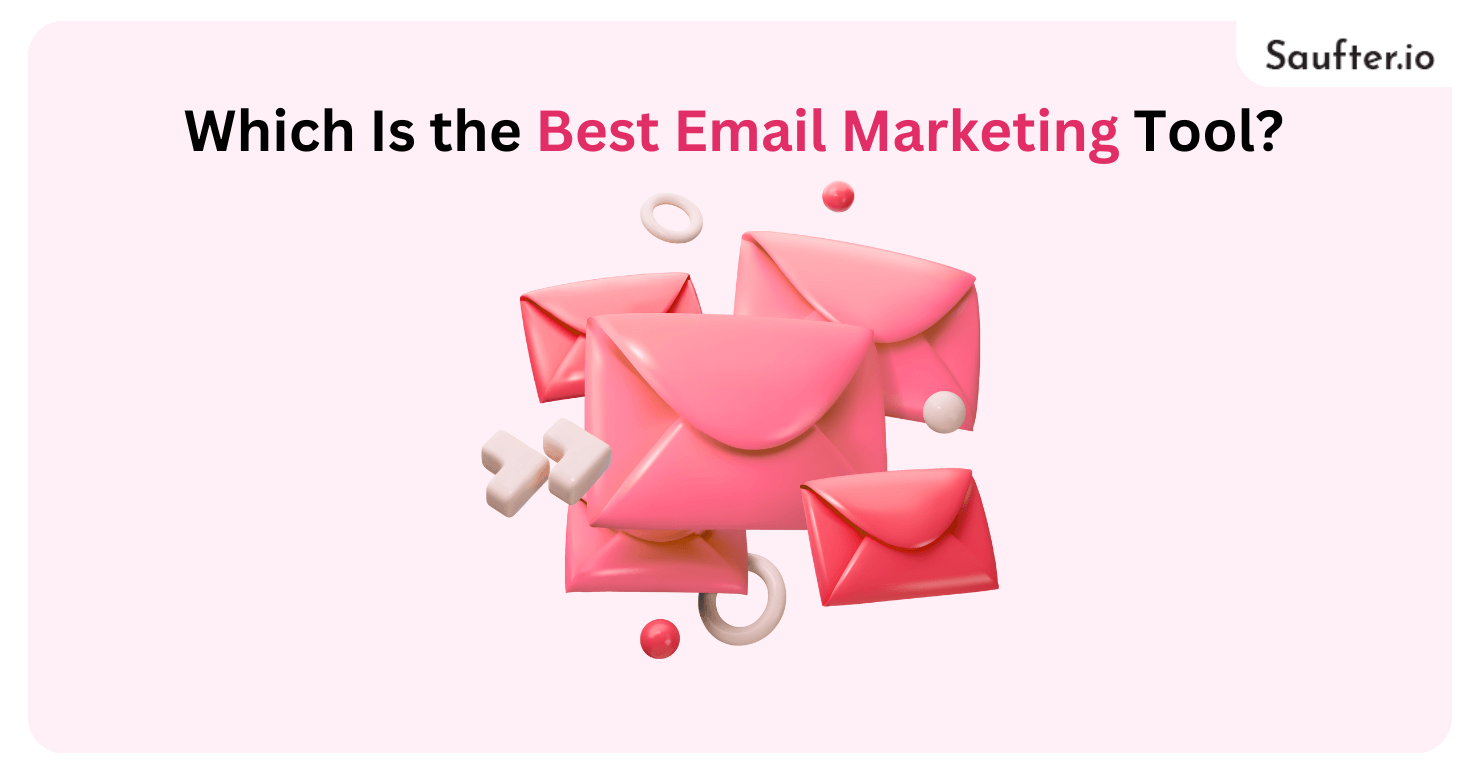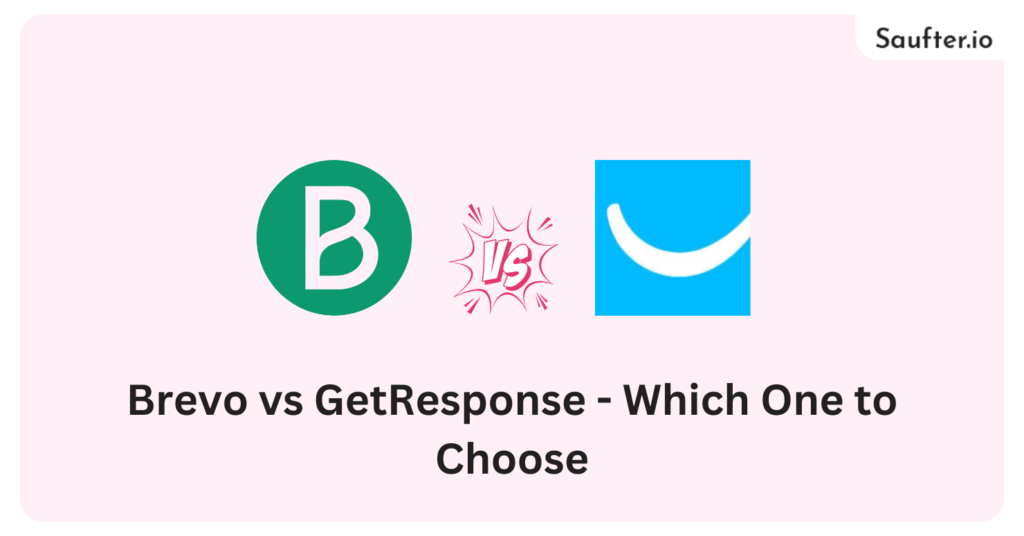Last Updated: December 2025
When it comes to email marketing in 2025, the choices are endless, but two names often stand out: Brevo vs GetResponse. Both platforms offer a range of powerful features designed to help businesses automate campaigns, nurture leads, and drive revenue. But with evolving customer behavior and increasing competition, choosing the right tool isn’t just about features; it’s about finding the platform that fits your growth strategy.

According to recent data, email marketing remains one of the highest ROI channels, delivering an average return of $42 for every $1 spent. As brands double down on personalization, automation, and omnichannel strategies in 2025, the tools you choose can make or break your success.
Let’s dive into a full comparison of Brevo vs GetResponse, breaking down their strengths, weaknesses, and everything in between to help you make an informed decision.
Quick Overview: Brevo and GetResponse
Before we get into the details, let’s start with a simple overview:
Brevo (formerly Sendinblue)

Known for its omnichannel capabilities, including email, SMS, WhatsApp, and transactional emails. It’s favored by small and medium businesses for its simplicity, flexibility, and affordable pricing.
GetResponse

A more comprehensive marketing suite, offering not just email but also webinars, paid ads, landing pages, and robust automation. It’s ideal for businesses looking to scale multi-channel marketing under one roof.
Table of Comparison
Feature | Brevo (formerly Sendinblue) | GetResponse |
Email Editor | HTML drag-and-drop editor | Visual email builder with AI-based builder, HTML & text editor |
Email Templates | 42+ templates | 192+ templates |
Automation | Advanced visual journey builder with multiple triggers, actions & channels (Email, SMS, WhatsApp, Webhooks) | Basic automation with email triggers, tagging, scoring, and ecommerce triggers |
Forms & Landing Pages | Basic subscription forms | Signup forms, landing pages, and a full website builder |
Interactivity (AMP, polls, quizzes) | Not supported | Not supported |
Analytics & Reporting | Opens, clicks, bounces, unsubscribes, spam complaints | Deeper analytics with device usage, email client data, heatmaps, and graphical reports |
Customer Support | 24/7 email, chat & phone support, dedicated account manager on higher plans | Email, chat, onboarding manager, kick-off calls, limited on the free plan |
Integrations | 58 integrations | 65 integrations |
Transactional Emails | Yes (all plans) | Yes |
Pricing Model | Based on emails sent (cost-effective for large lists with lower sending volume) | Based on the subscriber list size |
Ideal For | Small businesses, startups, and omnichannel campaigns | Growing businesses, multi-channel marketers, and ecommerce |
Trial Period | No trial (Free plan available) | 14-day free trial |
Email Creation & Design Capabilities
Email creation is the heart of any marketing platform. Here’s how Brevo vs GetResponse stack up:
Brevo offers a drag-and-drop HTML email editor that allows you to design emails easily from scratch or by using one of their 42+ growing templates. While it doesn’t provide a wide range of pre-made layouts or modules, it offers flexibility for users who prefer to customize.
GetResponse, on the other hand, shines with a broader range of templates, 192 and counting, and a visual email builder that includes AI-powered features.
It allows users to create both simple and advanced email designs with relative ease. Additionally, GetResponse includes features like spam testing, inbox previews, and dark mode testing, making it a better option for those focused on email deliverability and design optimization.
In short, if you want simplicity and flexibility, Brevo gets the job done. If you’re looking for more design variety and advanced testing features, GetResponse takes the lead.
Automation & Workflows
In 2025, automation isn’t optional; it’s essential. So, how does Brevo vs GetResponse compare?
Brevo offers a highly flexible visual email journey builder. It supports multiple entry points, advanced triggers, and omnichannel actions like sending SMS, WhatsApp messages, and even payment requests. With over 35 trigger options and 13 actions, you can craft detailed workflows that reflect complex customer journeys.
GetResponse, while offering automation, operates on a simpler scale. It includes 17 trigger options and 18 actions, mostly focusing on email activity, contact details, tagging, and ecommerce events. It’s efficient but may feel limited for businesses that need intricate, multi-channel workflows.
If your marketing demands deep automation with cross-channel communication, Brevo might be better suited. However, for email-focused automation with decent ecommerce triggers, GetResponse holds its ground.
Forms, Surveys & Interactivity
Interactive emails and advanced forms are becoming critical for lead generation and engagement.
Brevo supports basic subscription forms that integrate well with your website, but lacks built-in interactive email elements like quizzes, polls, or AMP features.
GetResponse provides a richer experience with landing page builders, signup forms, and website builders, giving you more options to capture leads. However, it too falls short in offering true interactive email elements inside the inbox.
For companies prioritizing website-based lead capture, GetResponse offers more flexibility. For simple, clean form integration, Brevo remains effective.
Analytics & Reporting
Without proper data, optimizing your campaigns becomes guesswork. Let’s look at how Brevo vs GetResponse handles analytics:
Brevo provides essential metrics like opens, clicks, bounces, unsubscribes, and spam complaints. However, it lacks more advanced insights such as click heatmaps, device usage reports, or detailed CTOR (click-to-open rate) data.
GetResponse excels here with deeper analytics, including graphical reports, device usage stats, email client data, and link click tracking. This gives marketers more visibility into subscriber behavior and helps optimize future campaigns.
If you’re a data-driven marketer, GetResponse’s advanced analytics will provide more actionable insights. Brevo still offers enough for those who prefer straightforward reporting without the extra bells and whistles.
Customer Support & Onboarding
When things go wrong (and they will), reliable customer support can be a lifesaver.
Brevo offers 24/7 email, chat, and phone support, including dedicated account managers on certain plans. Its onboarding is simple, with a straightforward setup process that doesn’t overwhelm new users.
GetResponse also offers comprehensive support, live chat, email, ticketing system, video tutorials, onboarding managers, and even personalized kick-off calls for higher-tier plans. However, their support is limited for free plan users.
For businesses that value dedicated onboarding and personalized support, GetResponse has an edge. For those who want quick and accessible help at any time, Brevo remains highly reliable.
Integrations & Extensibility
Your email platform should play nicely with your existing tech stack.
- Brevo integrates with 58 external platforms, including popular CRM, ecommerce, and CMS tools.
- GetResponse offers 65 integrations, with stronger options for ecommerce, landing page tools, and CRM systems.
If integration variety is your deciding factor in Brevo vs GetResponse, GetResponse offers slightly broader compatibility, but both cover most mainstream needs.
Also Read- 10 Best Promotional Email Examples
Pricing Comparison
Let’s talk numbers, because cost matters.
- Brevo (Sendinblue): Offers free and paid plans, starting at affordable rates. Its pricing is typically based on the number of emails sent rather than list size, making it more attractive for businesses with large lists but smaller send volumes.
- GetResponse: Also offers a free plan, with paid plans that start higher. Pricing here is list-based, so costs can rise as your subscriber count grows. However, the added marketing suite features may justify the price for businesses that fully leverage their capabilities.
If you’re a small business or startup looking for cost-effective email marketing, Brevo is often the better choice. If you’re an established business seeking an all-in-one marketing platform, GetResponse may justify the extra investment.
Brevo vs GetResponse, Which One Wins in 2025?
Both platforms have come a long way and are strong contenders for your email marketing needs. The real question isn’t which one is “better,” but which one is better for you.
- Choose Brevo if you need a cost-effective, omnichannel email platform with advanced automation, transactional emails, and easy-to-use features.
- Choose GetResponse if you want a comprehensive marketing suite with strong analytics, landing pages, webinars, and deeper integration options.
In the debate of Brevo vs GetResponse, the winner ultimately depends on your business size, budget, and marketing ambitions for 2025.
Which Is the Best Email Marketing Tool?

When it comes to choosing the best email marketing platform in 2025, both Brevo and GetResponse bring their unique strengths to the table. Your final decision depends on your business goals and marketing needs.
If you’re a business that heavily relies on transactional emails, such as order confirmations, shipping updates, password resets, and real-time customer notifications, Brevo transactional email capabilities stand out.
Unlike many other platforms, Brevo allows you to send transactional emails on both its free and paid plans, making it a cost-effective solution for ecommerce businesses, SaaS companies, and service providers who require reliable real-time messaging.
On the other hand, if your focus is more on lead generation, content marketing, and conversion-driven campaigns, the GetResponse website builder offers a powerful advantage. With its intuitive drag-and-drop interface, businesses can quickly build fully functional websites, landing pages, and signup forms without needing any coding expertise.
This makes the GetResponse website builder a one-stop solution for solopreneurs, coaches, and small businesses looking to establish a full online presence alongside their email campaigns.
In short:
- Choose Brevo if you want superior transactional email features combined with multichannel communication like SMS, WhatsApp, and email.
- Go with GetResponse if you need a versatile marketing suite with an easy-to-use website builder, webinars, and advanced sales funnels.
Ultimately, both platforms can serve as excellent tools depending on your specific marketing goals, budget, and technical needs.
Let us now introduce you to the best AI-based Email marketing tool- Saufter.io
Saufter: The Best AI-Based Email Marketing Tool

In the fast-paced world of digital marketing, Saufter AI stands out as the ultimate solution for businesses looking to optimize their email campaigns with cutting-edge artificial intelligence. Whether you run a SaaS platform, an e-commerce store, or any other online business, Saufter AI empowers you with data-driven insights and automation to enhance engagement and conversions.
Key Features
- Competitor Email Tracking: Automatically monitors and analyzes your competitors’ email campaigns, helping you stay ahead of the curve.
- User Behavior Analysis: Studies user interactions on your website and tracks their journey to generate targeted campaign suggestions.
- Personalized Email Campaigns: AI-driven personalization enhances email deliverability and engagement, ensuring your messages reach the right audience.
- Cohort-Based Suggestions: Segment users based on their engagement levels and behaviors to optimize campaign effectiveness.
Conclusion

As email marketing continues to evolve, tools like Brevo vs GetResponse are raising the bar for what brands can accomplish. With email still delivering some of the highest ROI in digital marketing, investing in the right platform today can set you up for long-term growth.
The global email marketing market is expected to reach $17.9 billion by 2027.
Whether you’re just starting or looking to scale, weigh your priorities carefully. Both Brevo and GetResponse offer free trials, so don’t hesitate to test them out before making your final decision.
In 2025, choosing the right email marketing platform could be the best decision you make for your business.
















